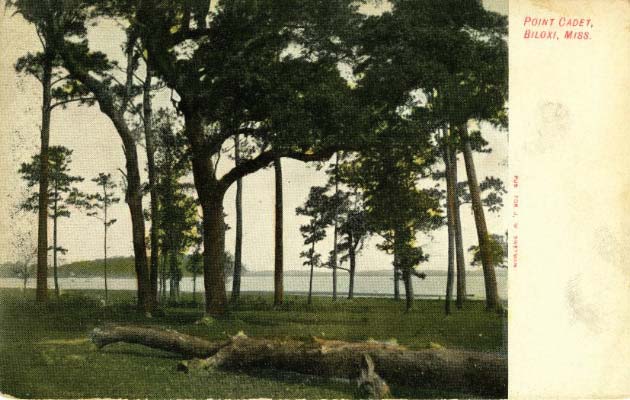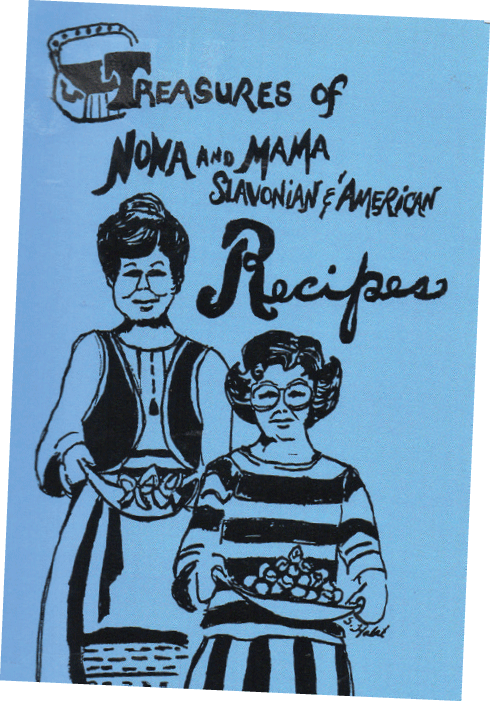Point Cadet and Rosetti's: The History of East Biloxi
Posted by Jane Shambra on Jun 21st 2024
IMAGE: Rosetti's on the Point.
This article was originally written by Jane Shambra with the title "Point Cadet and The Vancleave Special: Traveling Through Time" for BNews Monthly, the monthly newsletter of the City of Biloxi. All images courtesy of the Local History and Genealogy Department / Biloxi Public Library / Harrison County Library System.
The easternmost area of Biloxi is presently referred to as Point Cadet and is labeled as “Point Caddie” and “Point-a-Cadda” in older maps of Biloxi, dating as far back as 1851.
Geographically, a “Point” is an area almost surrounded by water, which appropriately describes Biloxi’s Point. The term Cadet is often referred to as a military designation; however, our Point Cadet was not reflected as being associated with an armed services agency. It is a French term for “junior.” Jacques Mathurin Ladner II was one of the first official property owners of The Point, and he was indeed a “junior.” So, The Point, in actuality, is named after him. Mr. Ladner acquired the land through a Spanish Land grant way back in 1784.
The topography of this area was initially depicted as a swampy, marshy, and tree-laden region in the easternmost part of the Biloxi peninsula. Point Cadet’s ideal location at the shoreline provided seafood industry opportunities as well as boat docking options.
 The Town of Biloxi, in fact, did not initially spring up in this location. The Charter of the Town of Biloxi of 1850 states that the town’s eastern boundary was just east of Bellman Street.
The Town of Biloxi, in fact, did not initially spring up in this location. The Charter of the Town of Biloxi of 1850 states that the town’s eastern boundary was just east of Bellman Street.
IMAGE: Point Cadet back in the day was filled with trees.
Maps of the 1850s clearly show the beginnings of Howard Avenue within the Point Cadet neighborhood. This east-west street (once called Pass Christian Road) was reported to follow an old Indian trail allowing safe foot, horse, and buggy travel upon higher ground and a cleared terrain. From The Point in Biloxi, travelers could journey on this road as far west as Pass Christian.
Through time The Point has gone through significant phases. In its early days, it was sparsely populated, involving a forested area of trees (such as Pine, Spruce, Oak, Maple, Cedar, and Myrtle) reflective of the foliage in the early days of The Point, and consistent with street names that are still mapped in this neighborhood of the city, even today.
By the turn of the nineteenth century, with the help of wealthy entrepreneurs, such as Misters Dukate, Lopez, Gorenflo, Elmer, Dunbar, and Maycock, seafood factories began to sprout on The Point. Workers from Baltimore, Slovenia, Bohemia, and Cajun Louisiana began to arrive, providing the necessary additional labor and joining with residents to support the thriving seafood industry.
The Census of Biloxi shows this increase in population as follows: 1880 (1,540); 1890 (3,234); 1900 (5,407);1910 (8,049); and 1930 (14,668). By 1930, there were about 500 boats, 1,500 boatmen, and 3,000 factory workers in the Biloxi seafood industry.
Many of the original seafood workers recognized the opportunity to expand from the harvesting and processing industry into successful eateries where locals and visitors could sample homemade culinary seafood delights. One of the families was the Rosetti family who operated Rosetti’s Restaurant on The Point at the corner of Howard Avenue and Myrtle Street.
The 1910 Census of Biloxi identifies several members of the Rosetti family and their neighbors living on First Street in the Point Cadet neighborhood. These Census pages list the occupations of these individuals as oystermen, factory laborers, net makers, and boat builders. In this Federal Census, the Rosettis are shown as originating from the Austrian Slavic shores and working in the oyster business. Indeed, the Rosettis perfectly transitioned their connection with the seafood industry into a memorable local restaurant. Jake and Pauline Rosetti opened the restaurant in the early 1930s at the foot of the Biloxi Bay bridge. They ran the restaurant until after World War II when Vincent Rosetti and George Rosetti Sr. (Eudy) took over.
Birth of the Po-Boy
A po-boy-type sandwich goes back a long way. Its original name was “poor boy.” During the Great Depression, in the late 1920s, French Bread sandwiches were serviced to the struggling workforce. Its design continues, even to this day. Today, its style is simply a “Po-boy.”
Pressed and Dressed
Local waitresses still ask customers if they prefer their sandwiches ‘dressed’ on po-boy bread, just like at the Rosetti’s Restaurant in the 1940s. Dressed means it includes lettuce, sliced tomatoes, and mayo. Pressed adds an added feature, whereby the entire sandwich is closed and pressed with a special hot grill, toasting the bread bottom and top.
 Now that Mardi Gras season has come and gone, folks are always searching for special Lenten meals to quench their seafood appetite. The Vancleave Special is an excellent choice. Although it is not certain what Mr. Rosetti originally compiled in his crabmeat delight, a local recipe book “Treasures of Nona and Mama: Slavonian & American Recipes” (published in 1985 by the Biloxi Slavonian Ladies Auxiliary) lists the ingredients as crab meat, green onions, bell peppers, onions, butter, celery, and parsley. This publication is available for purchase at the Biloxi Visitors Center gift shop and the Biloxi Public Library.
Now that Mardi Gras season has come and gone, folks are always searching for special Lenten meals to quench their seafood appetite. The Vancleave Special is an excellent choice. Although it is not certain what Mr. Rosetti originally compiled in his crabmeat delight, a local recipe book “Treasures of Nona and Mama: Slavonian & American Recipes” (published in 1985 by the Biloxi Slavonian Ladies Auxiliary) lists the ingredients as crab meat, green onions, bell peppers, onions, butter, celery, and parsley. This publication is available for purchase at the Biloxi Visitors Center gift shop and the Biloxi Public Library.
IMAGE: Treasures of Nona and Mama: Slavonian & American Recipes.
Po-boys were a specialty at the restaurant. They were first made with French Bread from Ellzey’s which was a store, post office, and bakery located on Howard Avenue east of Oak Street. Later, when Ellzey’s closed its bakery, the Rosettis filled their po-boy orders with po-boy bread from Desporte’s.
George Rosetti Jr. recalls why their po-boys were different. “My father started a process where they would cut out the soft part of the bread, leaving just the outer shell. We also had press toasters which no one had at the time,” George said. “The toaster would hold six sandwiches and by cutting out the inside, it made a crispy sandwich.”
George began working at the restaurant at the age of 13 where he handled many tasks including making sandwiches.
One of the specialized menu options at Rosetti’s became known as the Vancleave Special. It was a culinary delight of crabmeat with mayonnaise.
The Vancleave Special received its name back in the late 1940s at the original Rosetti’s Restaurant. A regular customer from Vancleave, Mississippi, Mr. Kipp Dees, special-ordered the crabmeat po-boy sandwich with cheese each time he visited the restaurant. The special edition became known as The Vancleave Special.
Visit our Shop page to order wild-caught Gulf shrimp to be shipped to anywhere in the country today!
New Bundle Alert! Check out our Freedom Feast Bundle! Available through July 31!
* Independence Day Notice *
Holiday Shipping Deadline is Tuesday, July 2nd, Noon CST!
Shipping resumes Monday, July 8th.

